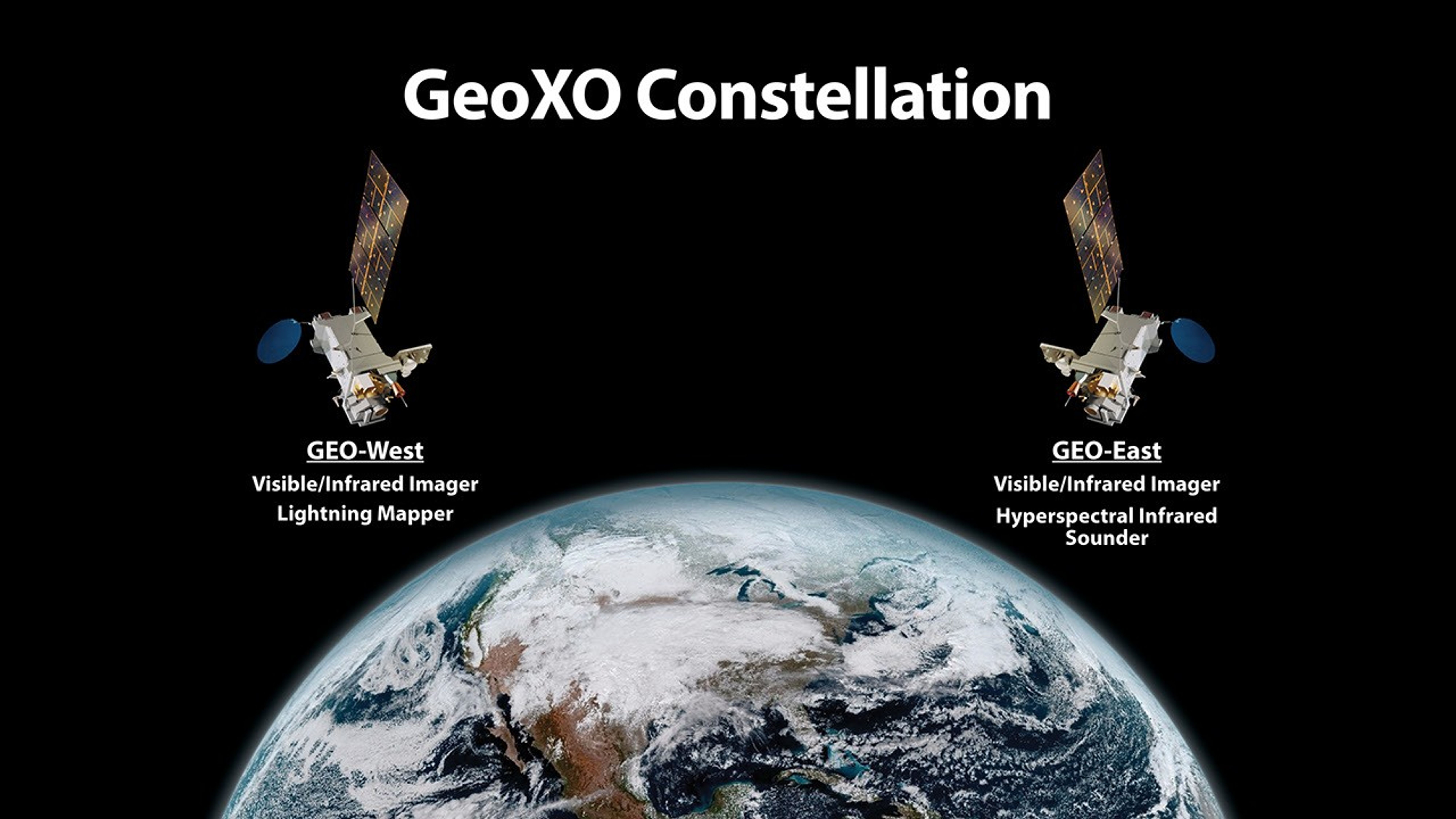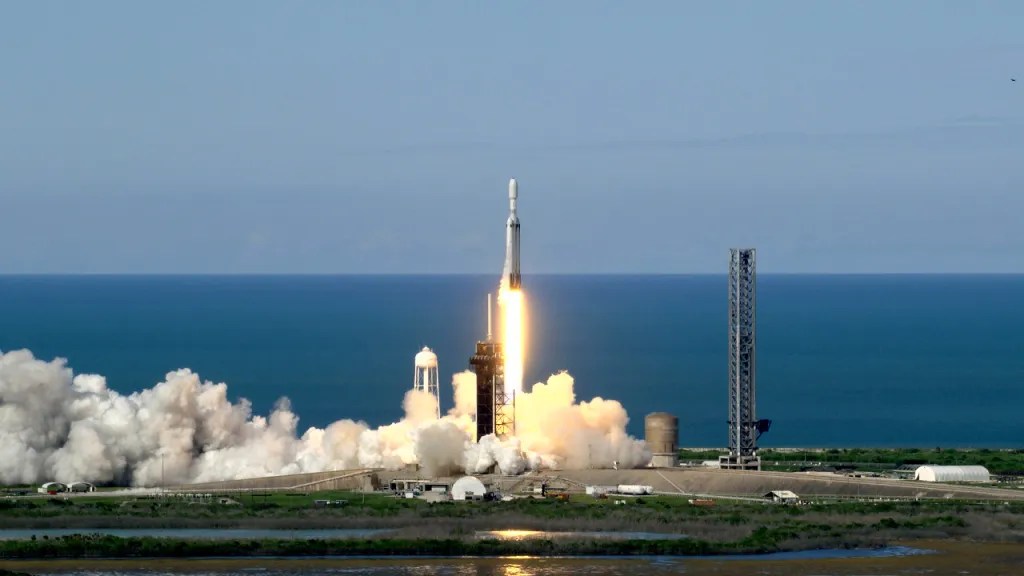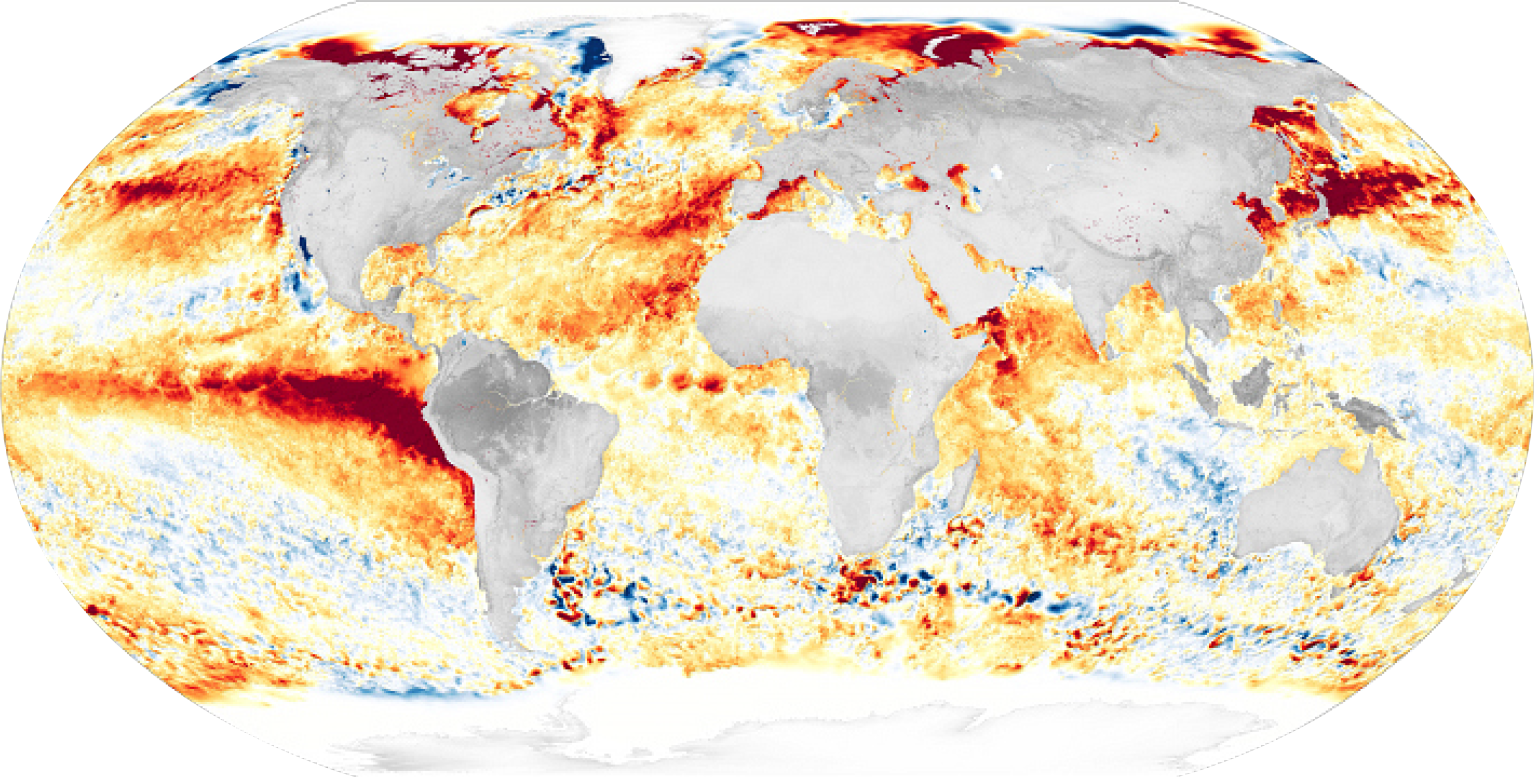GeoXO
Geostationary Extended Observations (GeoXO) is a collaborative NOAA and NASA program that will provide continuous imagery and data on Earth’s atmosphere, land and ocean for operational forecasts and warnings. NASA will build and launch the GeoXO satellites and NOAA will operate them.
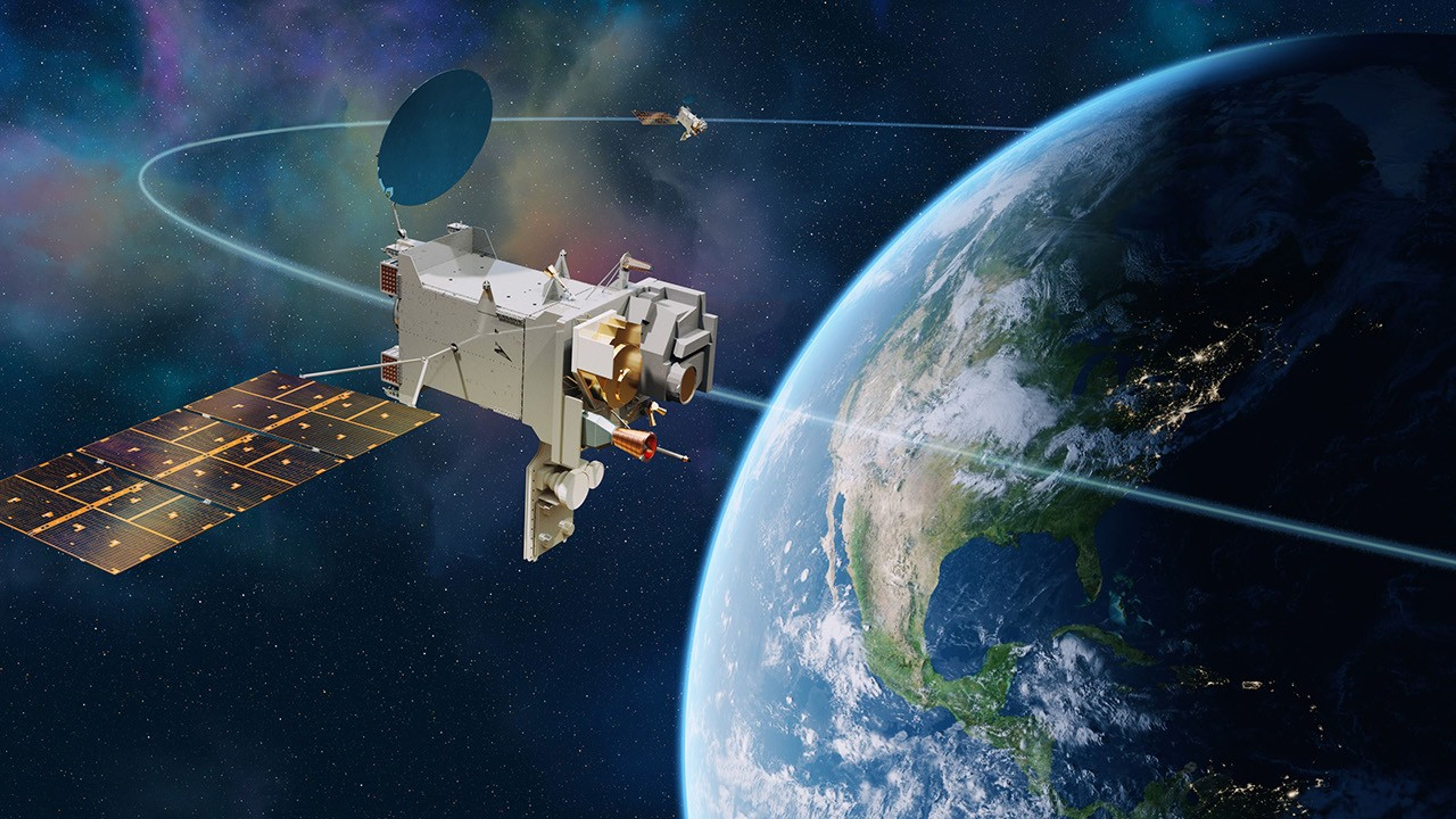
OVERVIEW
GeoXO will provide advanced imagery and atmospheric measurements of Earth’s Western Hemisphere and real-time mapping of lightning activity. GeoXO will support short-term forecasts and warnings of extreme weather and environmental hazards. The first GeoXO launch is planned for 2032, as the GOES-R Series nears the end of its operational lifetime. The GeoXO mission will maintain and advance NOAA’s geostationary Earth observations through 2055.
Instruments and Capabilities
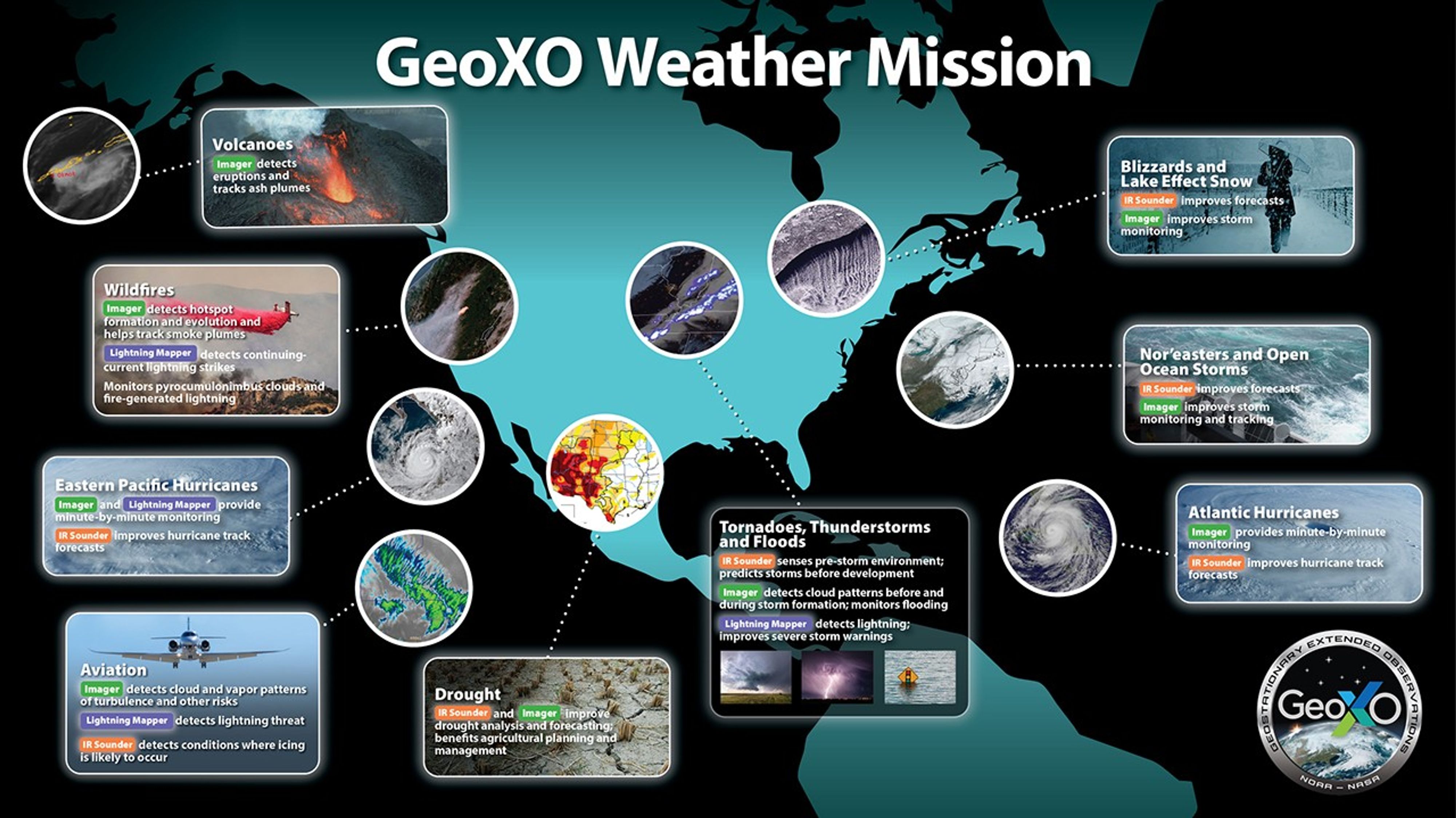
Planned GeoXO Observations
Visible and Infrared Imagery: Real-time, high-resolution visible and infrared imagery for monitoring Earth’s weather, oceans, and environment.
Lightning Mapping: Lightning detection to analyze severe storms, predict the intensity of hurricanes, respond to wildfires, estimate precipitation, and mitigate aviation hazards.
Hyperspectral Infrared Sounding: Real-time information about the vertical distribution of atmospheric moisture, winds and temperature for better numerical weather prediction and forecasts for short-term severe weather.
GeoXO News Feed
Contacts / Media
-
01
-
02






























